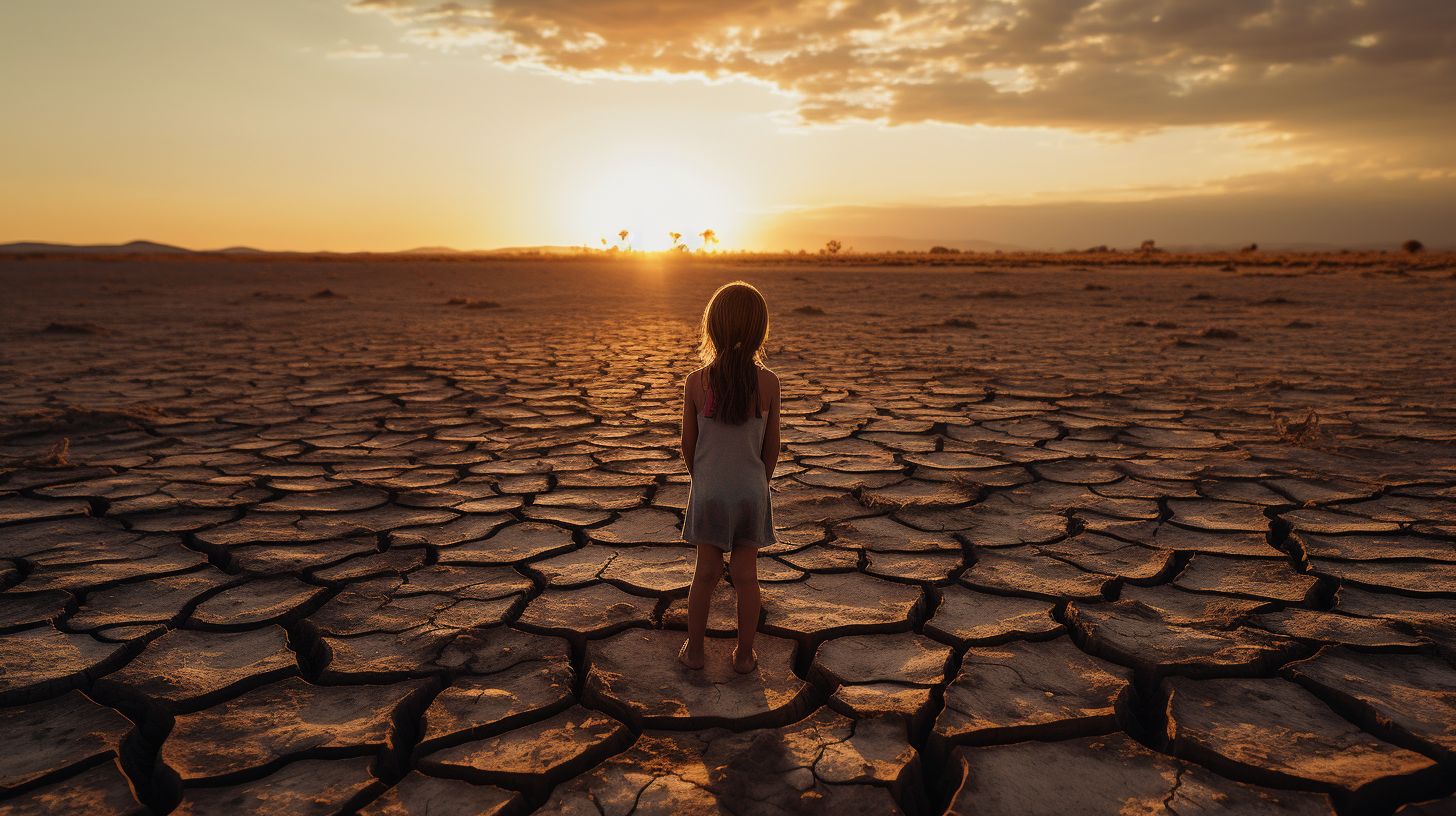The once-verdant plains have long whispered goodbye, their lush greenery replaced by the relentless sprawl of sepia and dust. In our latest chronicle of calamity, we peel back the layers on Infinite Drought – a term as boundless in connotation as it is in the reality it describes. Climate forecasts that once measured droughts in months, now find themselves grappling with an eternity of aridity.
Imagine marooned boats where children once frolicked in the palpable blue, envision ancient trees – those silent story-tellers – now skeletons against a foreboding sky. This is not the description of a new apocalyptic novel; this is the canvas of our daily backdrop.
We are witnesses to the unraveling of an age-old narrative, the reckless unspool of Mother Nature’s temper as desertification dances across continents. Rivers – our lifeblood – diminish into sorrowful trickles, while wells, those stoic providers, stand defeated, the ground parched like cracked porcelain around them.
‘An unending siege’, ‘a slow-motion catastrophe’, as some analysts call it, drought has ceased to be an interval between rainfalls but has mutated into an indefinite state of existence. Crops wither in surrender, and farmers stare at the horizon, hoping for a miracle that reality suggests will not come. Through this, we wonder, is this the perpetual future we have engineered for ourselves?
Delve into agricultural impasses where yield is but a fraction of what it was, a stark contrast to the mounting piles of drought-resistant GMO seeds which remain potent yet undeveloped due to the entanglements of bureaucracy and patents. Trace the journeys of migratory birds charting new courses across skies that no longer promise the oasis of lakes long evaporated.
Through interviews with experts, we dive into this harrowingly parched reality. ‘Adaptation and survival are one,’ says Dr. Aleksei Dryden, a climatologist whose research paints a grim tableau of the years to come. As water tables plunge to record lows, we bear witness to the emergence of new deserts where crops and cattle once flourished. Dr. Dryden reminds us, ‘We are negotiating with the terms set by a climate that no longer recognizes its keeper’.
Amidst this bleak panorama, innovation still persists in desperation’s shadow. We touch on ground-breaking, yet perhaps, too-late technological endeavours to extract humidity straight from the disdainful air and the harnessing of occult groundwaters deep within the earth’s embrace. These tales of human ingenuity, while commendable, appear as mere effigies in the face of a relentless adversary that has permeated the very soil we tread upon.
The narrative is heavy with irony – the deluge of initiatives poised to combat this crisis, juxtaposed with the desiccated expanses betraying a thirst that no bureaucratic promise has quenched.
Signs of life’s tenacity and adaptation emerge, futilely iterating nature’s resilience: a lone cactus standing in defiance, a hardy shrub breaching through a crack in a desolate earth. Yet, the dominion of drought has been etched too deep for these symbols to herald a change. Our thirst grows, for water, for solutions, for a semblance of the past normalcy – but perhaps that thirst remains the only thing we’re destined to have in abundance.
Infinite Drought – it’s not just a phenomenon. It’s a testament to human fallibility, an omnipresent tutor of our limits, and a ceaseless echo of a warning unheeded. As we grapple with solutions that seem as elusive as the rain, we are left examining the reflection of our own conduct in the barren, cracked ground. Is this the new normal? The verdict is still out, but nature’s gavel seems poised to deliver a resounding, irreversible judgment.
